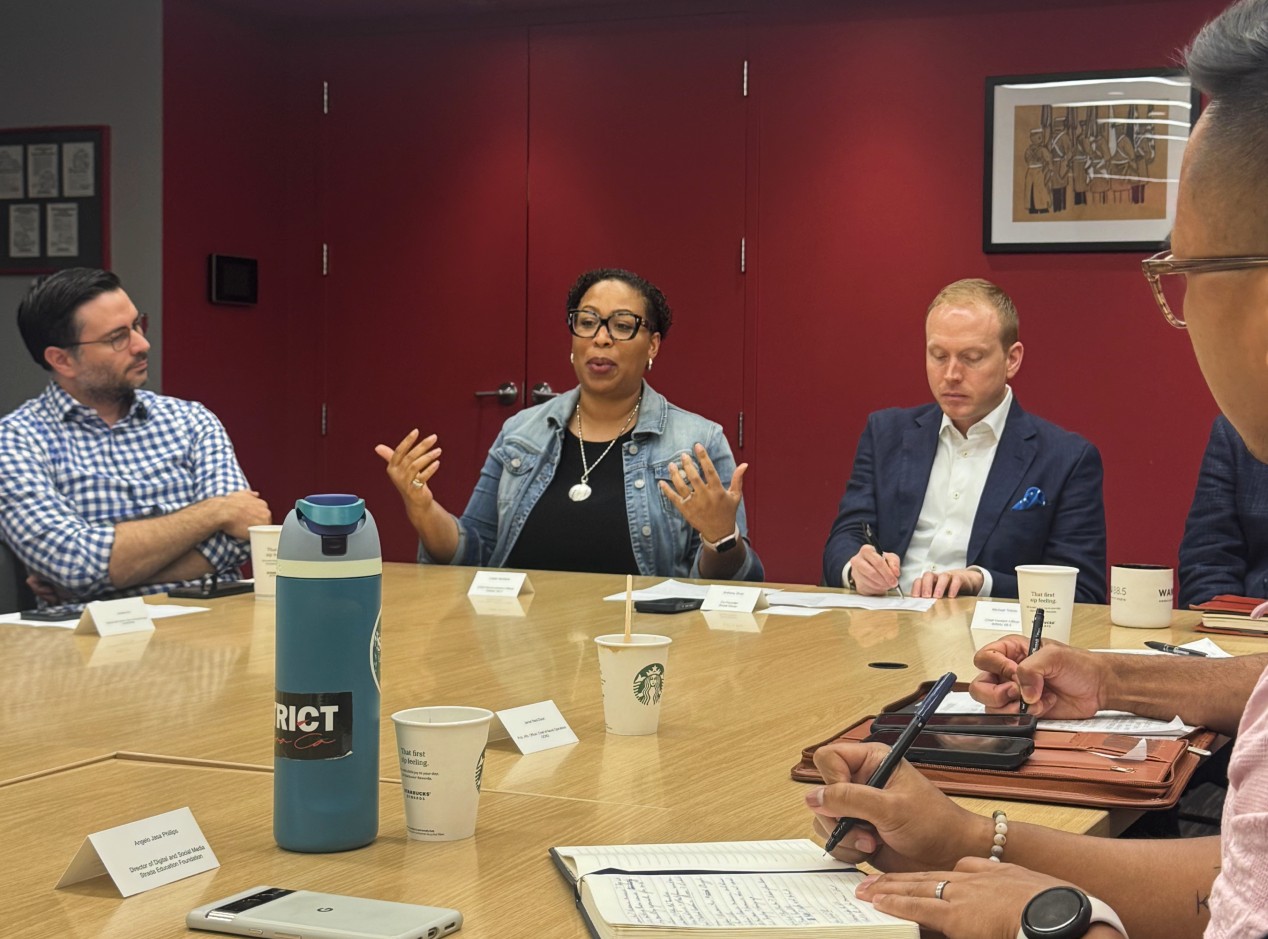The future of news is explored by a group that's in the trenches
National Digital Roundtable recently hosted a thought-provoking discussion at WAMU 88.5 in Washington, DC, bringing together about 25 professionals in journalism, media, and communications to explore the future of news. The conversation highlighted how evolving platforms, shifting audience habits, and innovative strategies are shaping a rapidly changing media landscape.

by Paul Mackie
I’ve worked in the Washington, DC, strategic communications field for 25 years. And just realizing as I wrote that last sentence, I suppose I’ve become something of a grizzled veteran—but even so, I’m regularly inspired by the talent and fresh ideas I encounter whenever I gather with fellow professionals in journalism, media, and communications.
It’s refreshing to step away from the internal struggles and challenges of the organizations I’ve worked for, and find inspiration anew. That’s exactly what happened this morning at WAMU 88.5, where I attended a gathering hosted by the National Digital Roundtable. The concept was simple: about 25 professionals sitting together, having an open conversation about their craft, with “the future of news” as the guiding topic.
The discussion began with a fascinating perspective from Aaron Parnas, a 26-year-old firebrand, former Republican, and now the #1 news influencer on Substack. Turning away from the GOP in light of Donald Trump’s daily blunders, the former public defender is now making a name for himself on social media, particularly Substack and TikTok. And it’s working—Rolling Stone called him “a sort of 20-something Walter Cronkite,” while his newsletter, The Parnas Perspective, is a captivating collection of news and interviews. Just today, he’s posted about Trump and Jeffrey Epstein’s disturbing connections, along with an interview featuring the French prime minister.
Parnas argued that the future of news is in authentic, bite-sized videos—90 seconds at most—delivered on social media. He’s known for presenting news in a facemask or bathrobe, and always admits when he gets something wrong—an honesty that’s rare in the news world and a major reason young audiences have drifted from traditional media. His audience, he says, is made up of “young people who don’t watch the news.” He wants to build relationships with followers who don’t already have ties to conventional outlets.
Nowadays, Parnas turns down plenty of self-promoting leaders looking for interviews, though he still takes some pitches—like an interview with Cory Booker right after the New Jersey senator’s marathon filibuster speech. Parnas claims his reporting reached 20 percent of the U.S. population last year—something no mainstream outlet could manage. And, he says, his young fans aren’t seeking deep analysis: they stay for 90 seconds, then move on to the next story.
WAMU had several staff members present. The chief content officer emphasized that while great content and catchy headlines matter, the station is also committed to serving the many communities across DC. The host of the popular program 1A admitted the station simply doesn’t have the resources to meaningfully engage on Twitter/X, so—rather than risk missteps—it decided to withdraw from the platform entirely.
When newspapers came up, it felt almost like an old-fashioned concept—one some in the room found nearly unfamiliar or uncomfortable to discuss. One attendee pointed out that, on average, two U.S. newspapers are closing every week. He argued that nonprofit funding is the future of news, and noted the rapid growth of the Institute for Nonprofit News annual conference as a promising sign. This seems far preferable to people in news deserts relying on unsourced Facebook gossip and doomscrolling through social media. After all, my own reporting and writing abilities came from years of education and experience—delivering news shouldn’t fall to someone who, say, enjoys a few too many piña coladas and spent their career teaching second grade (no offense to either of those excellent activities, by the way).
The conversation also touched on how communicators pitch stories to journalists. Someone from a security organization captured it best: “less volume and more precision” is the goal. I agree. My organization releases research reports almost daily, but it’s rarely worth reaching out to reporters that often. Strategic outreach focused on high-impact opportunities is far more effective.
Representatives from the White House Historical Association shared that their secret is to “play like a symphony”—making sure everyone in the organization is in sync through regular meetings. Siloed workplaces, in my view, are the enemy of bold communications strategies. Their team’s work building a successful podcast, The White House 1600 Sessions, and a monthly USA Today column for their president Stewart McLaurin, has built both brand and fundraising momentum. Speaking of podcasts, the League of Women Voters explained that their approach is to pitch their experts as guests, rather than launch a podcast that would probably only reach the converted—those already following LWV.
Other topics included the importance of “not forgetting local”—a reminder that came, interestingly, from the Motion Picture Association, which points to economic-impact stories like the recent Superman movie’s boost to Cleveland. Audience engagement was a big talking point, too, with many noting the challenge of striking the right balance: not overwhelming general audiences, but not underinforming specialists. Substack also came up as a promising new channel, especially as more journalists migrate there after leaving traditional media.
It’s a brave new media world—and it was invigorating to get so many thoughtful perspectives on how to navigate what comes next.

